
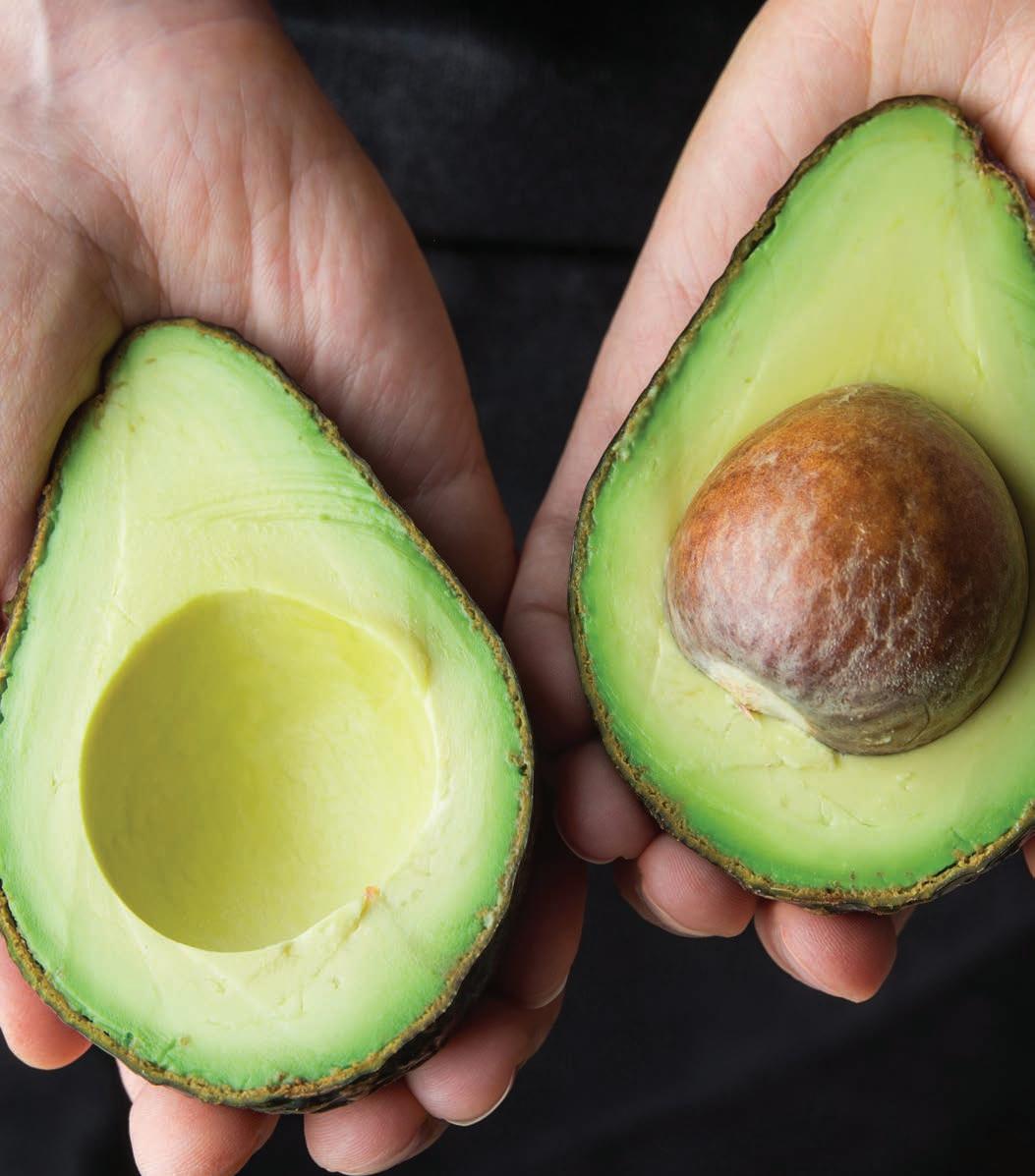



New Australian-made technology could be the solution to noise pollution in the ocean.
The noise created by commercial shipping and marine development has long had a negative impact on sea creatures that use sound to navigate, hunt, avoid predators and communicate. This disruption can also confuse reproduction and migration patterns, reducing biodiversity and ecosystem resilience.
GHD, an Australian-based engineering company, is looking to solve this crucial problem by offering a user-friendly modelling program that reduces the environmental impacts of projects such as offshore wind farms, which cause large amounts of noise during construction.
Pri Pandey, GHD Service Line Leader for Air and Noise, explains that
underwater acoustics are unique, and thus require a unique response.
“Unlike airborne acoustics, which [are] mostly empirical equations baked into commercial software, underwater acoustics is numerical modelling,” he says. “You’ve got a range-depth grid along bathymetric transects, different sea floor conditions, and complex algorithms that have been developed by the US Navy and others that see standard use.
“We wanted to build something that was super intuitive and basically brought these complex algorithms to the user in a way that allows us to quickly model different scenarios, understand the impact of mitigation, visualise different transects and how noise propagates along those transects visually.”
The GHD solution is different to

Australian engineers are investigating whether depleted gas reservoirs can safely store hydrogen for a stronger environmental future.
Hydrogen is the most common element in the universe, though it rarely accumulates in the subsurface. It is often stored in underground salt caverns, however when no salt caverns can be found, engineers are forced to find new solutions for an ongoing problem.
This is the case in Victoria’s onshore Otway basin, where

others on the market, because the program houses the database, evaluation and visualisation at once. Data such as whale migration routes can be incorporated into the impact assessment phase, for more accurate and comprehensive readings.
GHD plans to use the program, known as RAT (R Acoustics Toolbox) on upcoming wind farm projects in Australia, gathering feedback to determine how features can be enhanced for the future.
engineers are trying to determine whether depleted underground gas reservoirs can serve the same function as salt caverns.
“The challenge is to store hydrogen in large enough quantities to support variable renewable energy generation, energy security and grid stability,” says Jacqui Sutton, Lochard Energy’s Principal Reservoir Engineer.
However, the team faces some risks as hydrogen has a high diffusivity level and can migrate through other materials. In these underground reservoirs, this could mean that hydrogen migrates through the caprock to escape the storage area. If it found an ignition source, this could have disastrous consequences.
For large-scale hydrogen storage, the site must also be able to withstand chemical changes, such as reactions between the hydrogen and microbes in the rock formation.
“If hydrogen is consumed by the microbes, the byproduct may be hydrogen sulfide, which is toxic at high concentrations, although it can be safely removed before the hydrogen is used,” explains Jacqui.
Researchers are currently testing water samples from the area to determine what kind of microbes are present, and if hydrogen will be consumed.
If the reservoirs are deemed feasible as hydrogen storage areas, it could support the growth of renewable electricity generation infrastructure in Australia.

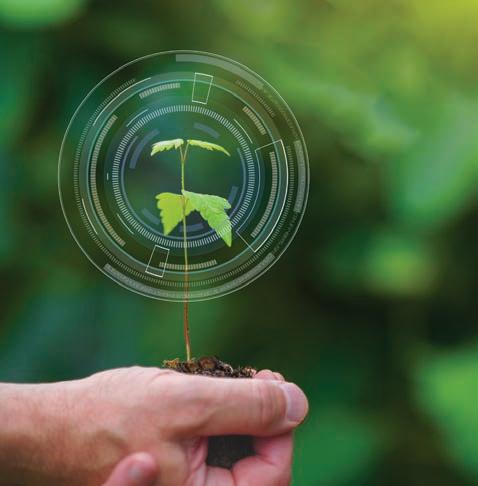
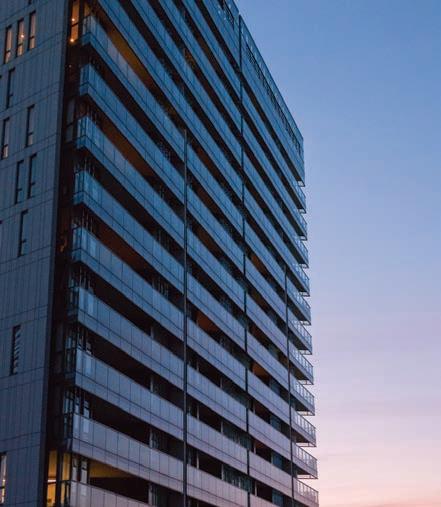


Australian Power Equipment (APE) recently had the honour of attending the 2025 Women in Industry Awards – a celebration of innovation, leadership, and excellence across sectors traditionally dominated by men.
Among the finalists was APE’s cofounder and Director, Abby Crawford, recognised in the prestigious Business Development Success category.
This accolade celebrates outstanding growth, forward-thinking strategy, and commercial achievement – all areas where Abby has delivered in spades. In just five years, she has helped shape APE from a nimble startup into a nationally recognised supplier of high-voltage power equipment, servicing clients across mining, infrastructure, renewables, and defence.
While she didn’t take home the trophy, Abby says the experience was a win in itself.
“Being named a finalist alongside such extraordinary women was both humbling and energising,” she says.
“The Women in Industry Awards aren’t just a celebration of success,

they’re a reminder that the future of our industries is brighter, more inclusive, and more innovative when women lead boldly.
“At APE, we’ve only scratched the surface of what’s possible. I hope our story encourages others to back themselves – even in spaces where they may not fit the mold. That’s where real change begins.”
Abby’s strategic leadership has seen APE transition from one-off product sales to delivering multimillion-dollar turnkey solutions. The company has expanded its footprint across Australia and New Zealand and is increasingly being recognised for embedding sustainability into every part of its operations.
One standout initiative is APE’s commitment to donating over 8 per cent of gross profits to conservation programs – a rare move in the industrial equipment space, and one that reflects Abby’s belief that business can and should be a force for g ood.
Among APE’s most meaningful partnerships is with Taronga Conservation Society, supporting
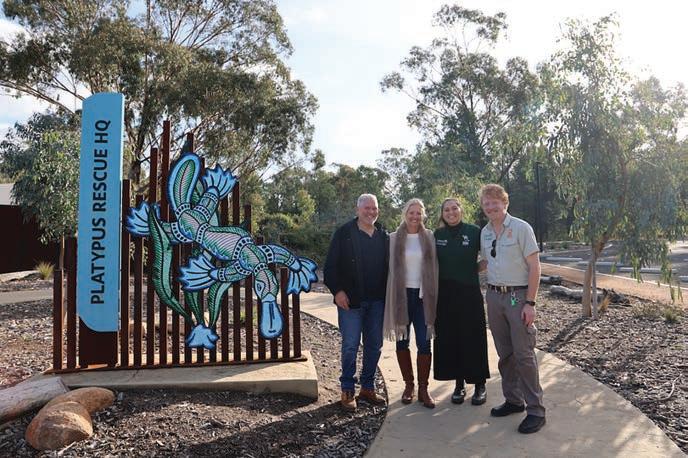

frontline work in endangered species protection, including the iconic Australian platypus.
As part of their support, the APE team recently visited Taronga Western Plains Zoo in Dubbo, where the world’s largest purpose-built platypus conservation centre – Platypus Rescue HQ – is located.
The state-of-the-art facility, built on Dundullimal Tubba-Gah Wiradjuri Country, opened just over a year ago, and has already delivered vital outcomes for this elusive native species.
“We were fortunate enough to tour the new Platypus Rescue HQ with platypus keeper James Witcombe,” says Abby.
“The facility is incredibly impressive, combining a research hub, rescue and rehabilitation space, and a pre-release zone for recovering platypuses. Seeing firsthand how our funding helps protect such an iconic species really brought home why this work matters.”
A key highlight of the centre is a custom-designed platypus habitat, where visitors can view Mackenzie, an adult male platypus and ambassador for his species. The exhibit has welcomed thousands of guests since opening, helping Australians of all ages connect with an animal many have never seen in the wild.
James Witcombe explains the power of this connection.
“It’s been amazing to see how Mackenzie captures the imagination. People are so excited to see a platypus up close, and to learn
“Seeing firsthand how our funding helps protect such an iconic species really brought home why this work matters.”
about how unique they are, and to better understand the challenges they face in the wild,” he says.
“People in regional NSW especially feel a strong connection to platypuses and are really keen to learn how to protect them. We call them a flagship species: if we care for platypuses, we care for river systems as a whole.
“A lot of guests are already reducing plastic in their daily lives, but seeing a platypus in person really drives the message home. It inspires action.”
APE’s partnership with Taronga Conservation Society Australia is a shining example of what can happen when businesses go beyond transactional thinking. It’s not just about corporate social responsibility; it’s about aligning purpose with impact and creating a model that futureproofs both planet and profit.
Taronga is a not-for-profit organisation. Every visit, donation, overnight stay, gift, or encounter booked helps protect Australia’s wildlife and wild places. And with support from businesses like APE, its reach and impact continues to grow.
For Abby and the APE team, this is just the beginning. “There’s so much more we can do, not just in business, but in backing the causes we care about,” she says. “Supporting Taronga has given our work even greater meaning. We’re proud to help protect the platypus and the ecosystems that sustain them.”

Australia’s avocado crop will drop 15 per cent in 2024/25 due to natural cycles. But there is good news on the horizon, with a record harvest set for 2025/26.
Words: Michelle hespe

Australia’s booming avocado industry is taking a slight breather, with production expected to dip by 15 per cent in the 2024/25 season. But according to agribusiness banking specialist Rabobank, the drop is temporary –and avo lovers have nothing to fear.
In its newly released Global Avocado Update 2025, Rabobank attributes the dip to a natural cycle known as “alternate bearing”, where avocado trees swing between highyield and low-yield years. Despite this seasonal downturn, Australian avocado growers are still set to produce around 128,000 metric tons of avocados – or close to 20 avocados per person for the year.
And there’s plenty of good news on the horizon. Production is forecast to bounce back in 2025/26, hitting record volumes of approximately 170,000 metric tons, driven by mature trees planted during the peak years of the avocado boom.
Rabobank analyst Anna Drake says the rush of new trees planted during the avocado craze – particularly around 2019 – is now coming to fruition, quite literally. However, 2024 marked a turning point.
“Avocado tree planting has dropped to its lowest level since 1999,” Drake explains. “It’s down more than 90 per cent from the 2019 peak. That signals we’re moving into a more balanced phase of the industry, where growth begins to level off.”
While the rapid expansion of avocado orchards is tapering, production volumes are expected to remain strong. The trees planted during the planting frenzy are now in full swing, and as they hit their productive peak, the overall output will continue to trend upward – albeit more steadily.
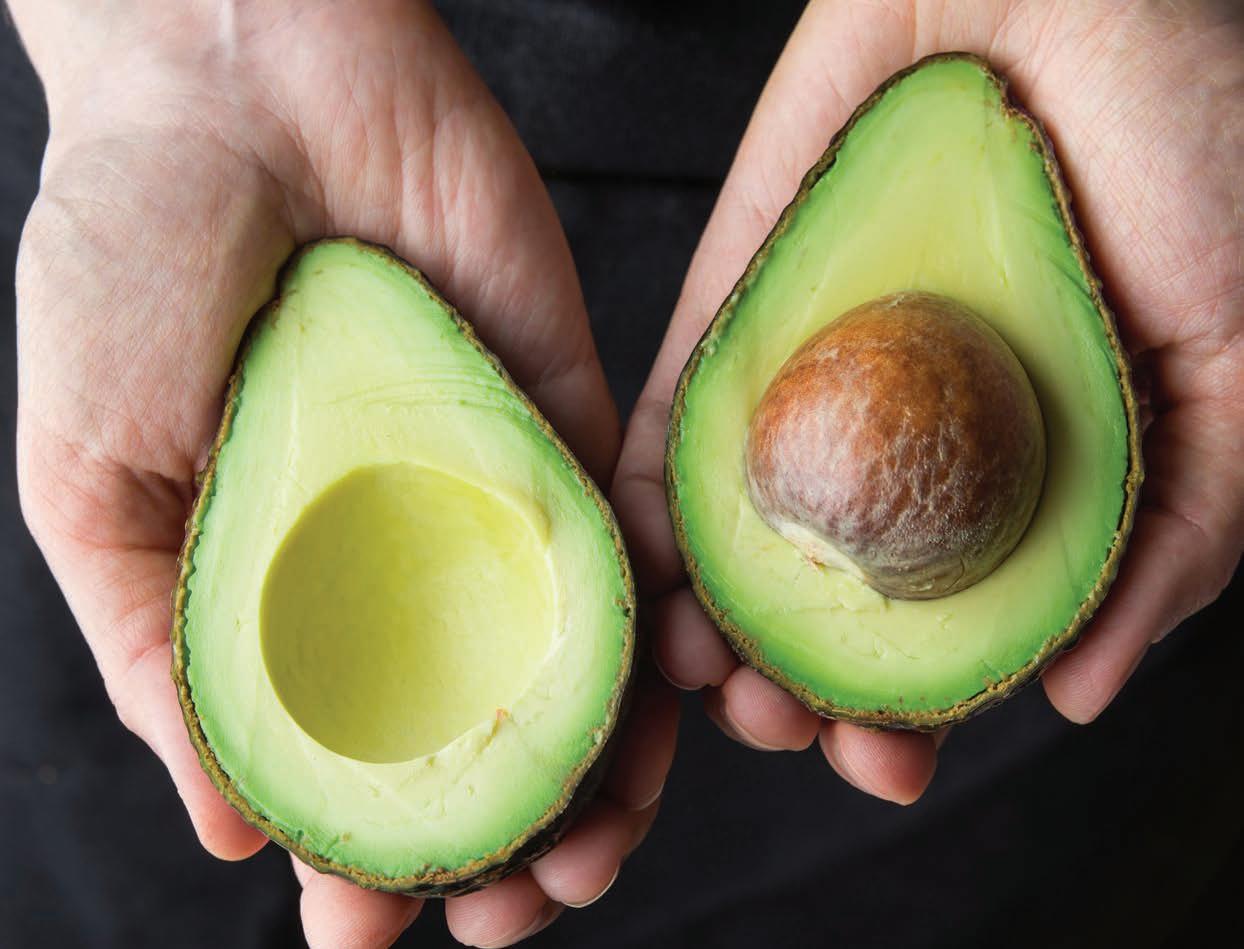
Currently, 10 to 15 per cent of Australian avocado production is exported, and that figure is expected to grow as more trees reach maturity and production increases.
Although Australian avocado export volumes remained flat in 2024, there was a silver lining for growers: export prices rose by 13 per cent, reaching an average of AUD 5.18 per kilogram.
Major export markets such as China, Singapore and Malaysia remained consistent in terms of volume. However, India emerged as a standout,
with volumes increasing sharply thanks to improved market access.
Over the past five years, the industry has made strong strides into international markets. Currently, 10 to 15 per cent of Australian avocado production is exported, and that figure is expected to grow as more trees reach maturity and production increases.
“With a bumper crop anticipated next season, continued growth in
exports will be vital to ease pressure on domestic prices,” Drake says.
While Australia’s avocado market is showing signs of maturity, the global avocado market is still expanding rapidly – and has now smashed through the USD 20 billion (AUD 30 billion) mark in consumer value.
Rabobank’s senior horticulture analyst David Magaña notes that 88 per cent of this value is driven by just three regions: Latin America, North America and Europe. Latin America remains the largest consumer by volume, while North America has seen a dramatic surge in demand over the past two decades, thanks in part to effective marketing campaigns.
“Other regions still represent a relatively small portion of global market value – just 12 per cent – which presents strong growth potential,” Magaña adds.
Avocado exports across the globe are accelerating. Rabobank estimates that global avocado exports will top three million metric tons by 2026/27 –a massive leap from one million metric tons just over a decade ago in 2012/13.
This growth is largely being driven by the top three exporters – Mexico, Peru and Colombia – which account for around two-thirds of global exports. But there’s also a shift underway, with new producing and exporting countries entering the scene, drawn by the high returns that avocados have delivered in recent years.
“Diversification of supply is positive for the industry overall, but it also means some markets are facing seasonal oversupply.”
“Diversification of supply is positive for the industry overall, but it also means some markets are facing seasonal oversupply,” Magaña says. “That creates downward pressure on prices, so continued marketing campaigns and demand generation will be essential.”
As global production ramps up and margins tighten, the avocado industry is entering a new phase – one focused on sustainability,
market development, and strategic expansion. For Australian growers, the challenge will be balancing high-quality domestic supply with growing export opportunities, especially in newer markets such as India and Southeast Asia.
With Australian production set to return to record levels and the global appetite for avocados showing no signs of slowing, the next few years will be crucial in shaping the industry’s future. And for Aussie consumers? It looks like there’ll still be plenty of guac to go around.


For Blue Mountains local Jack Laurie (OKG24), joining Knox Grammar School for his senior years of schooling put him on the path to studying Commerce and Law. Here, Jack shares his story.
“Up until Year 10, I attended the local high school near where my family lives. Although I was settled in the school, I found the environment increasingly restrictive as limited resourcing and a lack of other ambitious students placed a sort of ceiling on what I felt I could achieve.
“My parents and I decided that Knox Boarding provided an impressive environment with sufficient resources and culture to allow me to push myself during the senior years.
“Before arriving at Knox, I made efforts to contact and connect with the school’s cricket and performing arts programs. Before the year had even commenced, I had already played trial matches for cricket, and auditioned for the musical Catch Me If You Can I would highly recommend such early efforts to hit the ground running and make the most of the vast array of opportunities at Knox.
“Arriving at a large school is really challenging. However, being alongside a smaller cohort of around 45 other boarders in my year group provided a more supportive environment to settle into and make friends, helping me to become more comfortable.
“Importantly, Boarding allowed me access to incredible academic resources and excellent teachers who supported me in persuing my ambitions. Such academics, partnered with sports and performing arts, enabled me to pursue a more holistic student experience (living at school gives you so much more time to participate in such programs). These experiences ultimately informed my leadership journey, as I became the Stage 6 Boarding Prefect in Year 12.
“All of these opportunities allowed me to achieve results which were well beyond where I was tracking before I arrived at Knox, and which exceeded my goals. This was in large part due to the exceptional support provided both by teachers in the day school and in Boarding. This year, I plan to study Commerce and Law at the University of Sydney and have been accepted to live at St Paul’s College.
“I’m grateful for the position that Knox has placed me in for the future.”
To learn more about Boarding at Knox, we encourage you to tour the Boarding House when you’re next in Sydney. Alternatively, you can contact Martin Gooding, Head of Engagement, at 02 9473 9768 or goodingm@knox.nsw. edu.au to discuss how Knox Boarding could support your family.


Applications for Knox Boarding Scholarships for boys from regional areas open 10 November 2025. Examinations will be held at the Knox Grammar School Senior School Campus as below:
• Sunday 15 February 2026 – Year 5 2027 Scholarship Examinations
• Sunday 22 February 2026 – Year 7, Year 11, and Regional Boarding 2027 Scholarship Examinations
Please contact Martin Gooding, Head of Engagement on (02) 9473 9768 or email goodingm@knox.nsw.edu.au

For generations of regional and rural families, sending a son away to boarding school is both a practical decision and a heartfelt leap of faith. At St Joseph’s Nudgee College, that journey is made easier thanks to a community that feels more like family than school.
Named the 2024 Australian Boarding School of the Year, Nudgee College is renowned for delivering more than just academic excellence; it offers a true home away from home for over 310 boarders from across Queensland, New South Wales, and the Pacific.
Set within the purpose-built Bathersby Boarding Village, life at Nudgee is structured around connection and care. Students are part of one of four Houses, each led by a dedicated team including a Head of House, Assistant Heads, and a House
Mother, the heart of each residence. Their nurturing presence ensures the boys feel supported, seen, and genuinely cared for every day.
“We pride ourselves on building more than routines, we build relationships,” says Dean of Boarding Casey Brealy. “The people here are what make Nudgee truly special. Our House Mothers, staff and mentors provide a level of care that creates a deep sense of belonging.”
But the support goes even further. Nudgee’s boarding program integrates academic tutoring, health and wellbeing services, spiritual formation and recreation, all tailored to the unique needs of boys from the bush. From counsellors to nurses and weekend activity staff, every element is designed to help students thrive holistically.
Principal Scott Thomson reflects on being named Australian Boarding School of the Year with pride, describing it as “a testament to our entire community, to the dedication of our staff, the trust of our families, and the resilience and spirit of every single boarder.”
With a proud legacy stretching back over 130 years, Nudgee College blends tradition with innovation, offering boys the structure of routine with the freedom to grow into confident, capable young men.
Whether you’re flying from Longreach, Lismore or beyond, know that there’s a boarding school in Brisbane that understands your journey and is ready to walk alongside you and your son every step of the way. Due to demand, additional spots for Year 7 2026 are still available. To learn more or arrange a tour, visit our website or call (07) 3865 0543 to speak to our Admissions Officer.
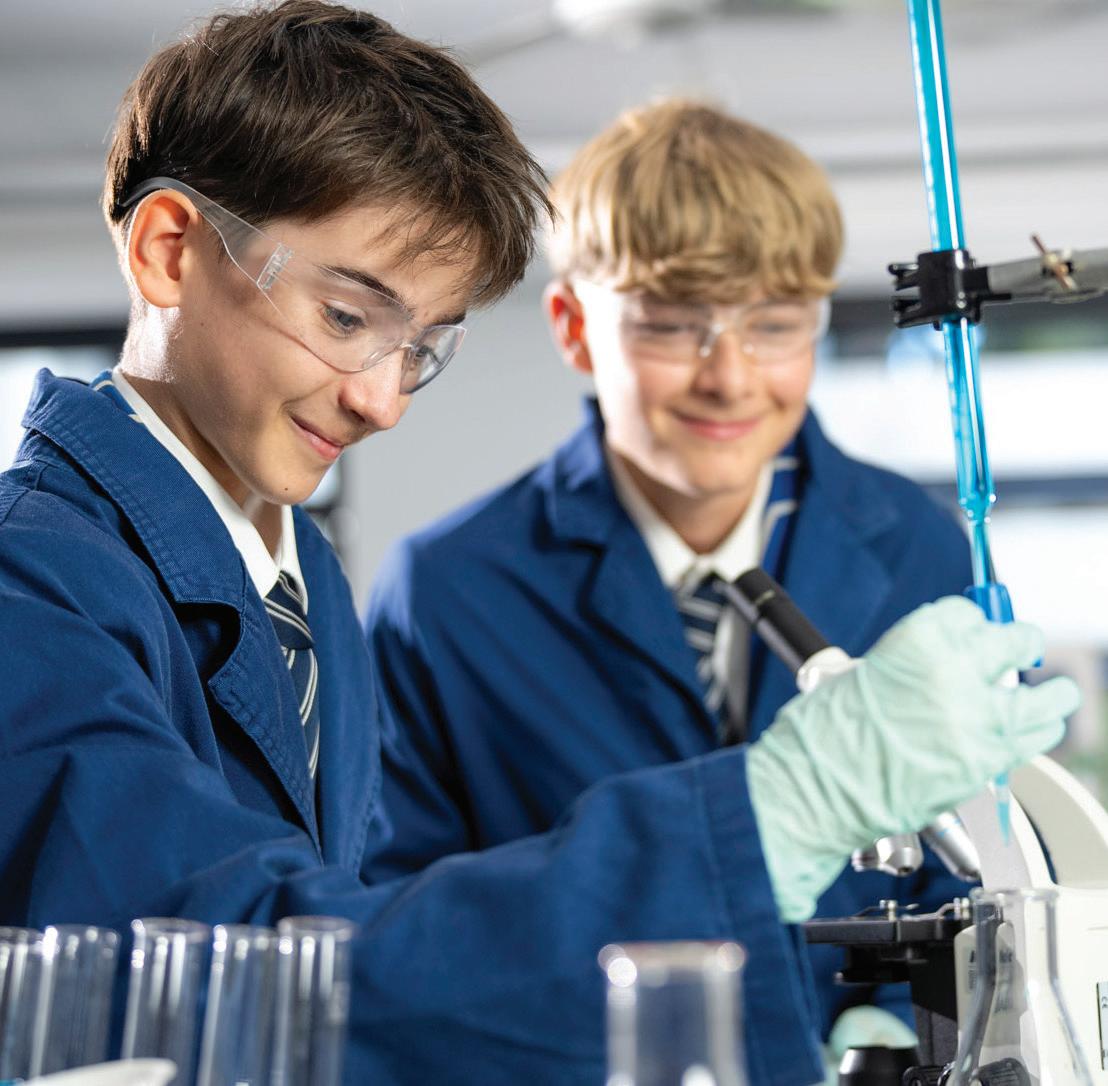

PROFESSOR

Words: Sean Carroll
A cutting-edge digital platform is providing access to the inner world of Australia’s most iconic animals.
From platypus to bilbies, kangaroos to emus, and even species long extinct, Ozboneviz offers educators, researchers and curious minds a whole new way to engage with our natural heritage.
Ozboneviz is an open-access digital archive showcasing highly detailed 3D models of vertebrate skeletons from Australia and New Guinea. The project was developed by the Australian Research Council Centre of Excellence for Australian Biodiversity and Heritage (CABAH), with the goal of making biological research and education more accessible, reliable and data-rich.
Currently, the platform hosts over 1,600 digital files, featuring remarkable specimens such as a complete ringtail possum skeleton and the skull of the extinct thylacine (Tasmanian tiger). These scans not only preserve delicate and rare materials, but also make them freely available to anyone with an internet connection anywhere in the world.
In a country recognised as one of the most biodiverse on the planet, a tool like Ozboneviz is revolutionary. Australia’s long isolation as an island-continent has produced animals found nowhere else: marsupials with pouches, monotremes that lay eggs, and evolutionary conditions that puzzle scientists to this day. Capturing this diversity
digitally is a giant leap forward in documenting and understanding our unique ecosystems.
Ozboneviz relies on state-of-the-art scanning techniques to create its digital models. Micro-CT (microcomputed tomography) provides incredibly fine-grained images of both the external and internal structures of specimens. Structured light scanning may also be used for larger or more delicate bones.
The raw data is then processed using 3D software such as MeshLab and Blender, where scans are cleaned, aligned, and converted into complete models. These are tagged with
detailed metadata including species name, skeletal element, specimen ID, and, where known, age and sex. This makes each specimen searchable and scientifically robust.
The project follows the FAIR principles (Findable, Accessible, Interoperable, and Reusable), ensuring that researchers, educators and students can access the content quickly, confidently, and ethically.
What once required a visit to a museum or access to rare archives can now be done from a classroom, lab, or even a laptop at home. Ozboneviz offers high-resolution skeletal models of Australia’s animals at the click of a button, helping scientists analyse form and function, and enabling teachers to bring biodiversity into the classroom like never before.
Whether it’s a primary school class learning about marsupials or a university researcher studying bone development across species, Ozboneviz provides an immersive experience that’s both educational and engaging. The database is also compatible with virtual and augmented reality platforms, delivering even more opportunities for digital learning.
Though it currently covers only a portion of Australia’s wildlife, the project is growing. In years to come, we may see expanded collections, including entire taxonomic groups or even plant and insect life added to the mix. The potential for scientific collaboration and public engagement is enormous.
Ozboneviz marks a major expansion in the way we conserve, study, and share knowledge about the natural world.
“What once required a visit to a museum or access to rare archives can now be done from a classroom, lab, or even a laptop at home.”
As biodiversity faces growing threats, digital initiatives like this one ensure that we can continue to learn from species long after they’re gone, and protect those that remain.
While its current focus is skeletal modelling, the platform’s future may involve deeper integration with artificial intelligence. Ethically
CLOCKWISE FROM TOP: THE OZBONEVIZ DIGITISATION TEAM
DR ERIN MEIN AND JACOB VAN ZOELEN; FEATURED ANIMALS
INCLUDE THE EASTERN RINGTAIL POSSUM; USERS CAN ACCESS THE SERVER FROM THEIR HOME.
deployed AI could help identify patterns, assist with conservation planning, or even predict how certain species will respond to environmental changes and human interaction.
In that sense, Ozboneviz isn’t just a static archive: it’s a living, evolving tool for 21st-century science. And it’s proudly Australian.



words: Matilda Meikle

A team of researchers led by Monash University have developed a new artificial intelligence model capable of detecting skin diseases faster and with more accuracy.
In a report published in Nature Medicine, scientists unveiled one of the world’s first AI-powered tools designed to support the dermatological medical practice by analysing multiple imaging types simultaneously, delivering accurate and efficient results.
The model, known as PanDerm, can scan close-up photos, dermoscopic images, pathology slides and total body photographs in real time.
According to Cancer Australia, there were an estimated 18,257 new cases of skin melanoma diagnosed in 2023,

accounting for a 1 in 17 risk of being diagnosed by the age of 85. While there is a wide number of different skin diseases, Australia has one of the highest rates of skin cancer in the world due to long periods of sun exposure and high UV radiation. Major causes of skin cancer
and melanoma include sunburn, tanning and solariums. According to the Cancer Council, 1 in 8 adults and 1 in 5 teenagers in Australia will report sunburn on an average summer weekend.
Supporting this new method of skin disease diagnosis is one way to help lower the prevalence of melanoma and other skin diseases in Australia.
To train the AI algorithm, scientists input more than two million skin images from four medical categories, alongside data from 11 institutions in multiple countries.
One of the lead co-authors of the research, Associate Professor Zongyuan Ge from Monash University’s Faculty of Information Technology, says that existing dermatology AI models
are restricted to performing isolated tasks, such as diagnosing skin cancer from dermoscopic images.
“Previous AI models have struggled to integrate and process various data types and imaging methods, reducing their usefulness to doctors in different real-world settings,” Associate Professor Ge says..
“PanDerm is a tool designed to work alongside clinicians, helping them to interpret complex imaging data and make informed decisions with more confidence and support.”
Unlike the single-task approach of existing models, PanDerm can complete a wide range of clinical tasks including skin cancer screening, predicting the chances of cancer returning or spreading, skin type assessment, mole counting, lesion change tracking, lesion segmenting, and diagnosing a wide range of skin conditions.
When tested, these actions were delivered with just 5-10 per cent of the labelled data typically required for concrete answers.
Siyuan Yan, first author and PhD student from Monash University Faculty of Engineering, says training the system on a variety of image types was key to unlocking its full potential.
“By training PanDerm on diverse data from different imaging techniques, we’ve created a system that can understand skin conditions the way dermatologists do: by synthesising information from various visual sources,“ Siyuan Yan said.
“This allows for more holistic analysis of skin diseases than previous single-modality AI systems.“
Over a series of PanDerm evaluations, it was found that the software increases accurate skin cancer diagnosis by 11 per cent when used

“PanDerm is a tool designed to work alongside clinicians, helping them interpret complex imaging data and make informed decisions with more confidence.”
by a doctor. The model also supported non-dermatologist healthcare professionals to improve diagnosis accuracy on other skin conditions by 16.5 per cent.
The AI program could detect skin cancer early, even identifying concerning lesions before clinical detection was possible.
When employed in a clinical setting, PanDerm is intended to be used as a support tool, analysing skin images that doctors routinely use to offer diagnostic probability assessments that support clinicians in interpreting visual data with greater confidence.
One lead co-author of the study and Dermatology Research Centre Director at the University of Queensland, Professor H. Peter Soyer, says the program will help combat the differences in imaging and diagnostics techniques used in clinics based on the availability of resources.
“The strength of PanDerm lies in its ability to support existing clinical workflows,” Professor Soyer says.
“It could be particularly valuable in busy or resource-limited settings, or in primary care where access to dermatologists may be limited.
“We have seen that the tool was also able to perform strongly even when trained on only a small amount of labelled data, a key advantage in diverse medical settings where standard annotated data is often limited.”
Moving forward, the team aim to create standardised protocols for cross-demographic assessments. They want to test the model in a variety of real-world clinical settings. The main focus is determining whether the program performs reliably when presented with different patient demographics or in diverse healthcare environments.
LEFT TO RIGHT: BACKTRACK SUPPORTS YOUNG PEOPLE DOING IT TOUGH; THE PAWS UP PROGRAM CONNECTS YOUNG PEOPLE WITH DOGS.
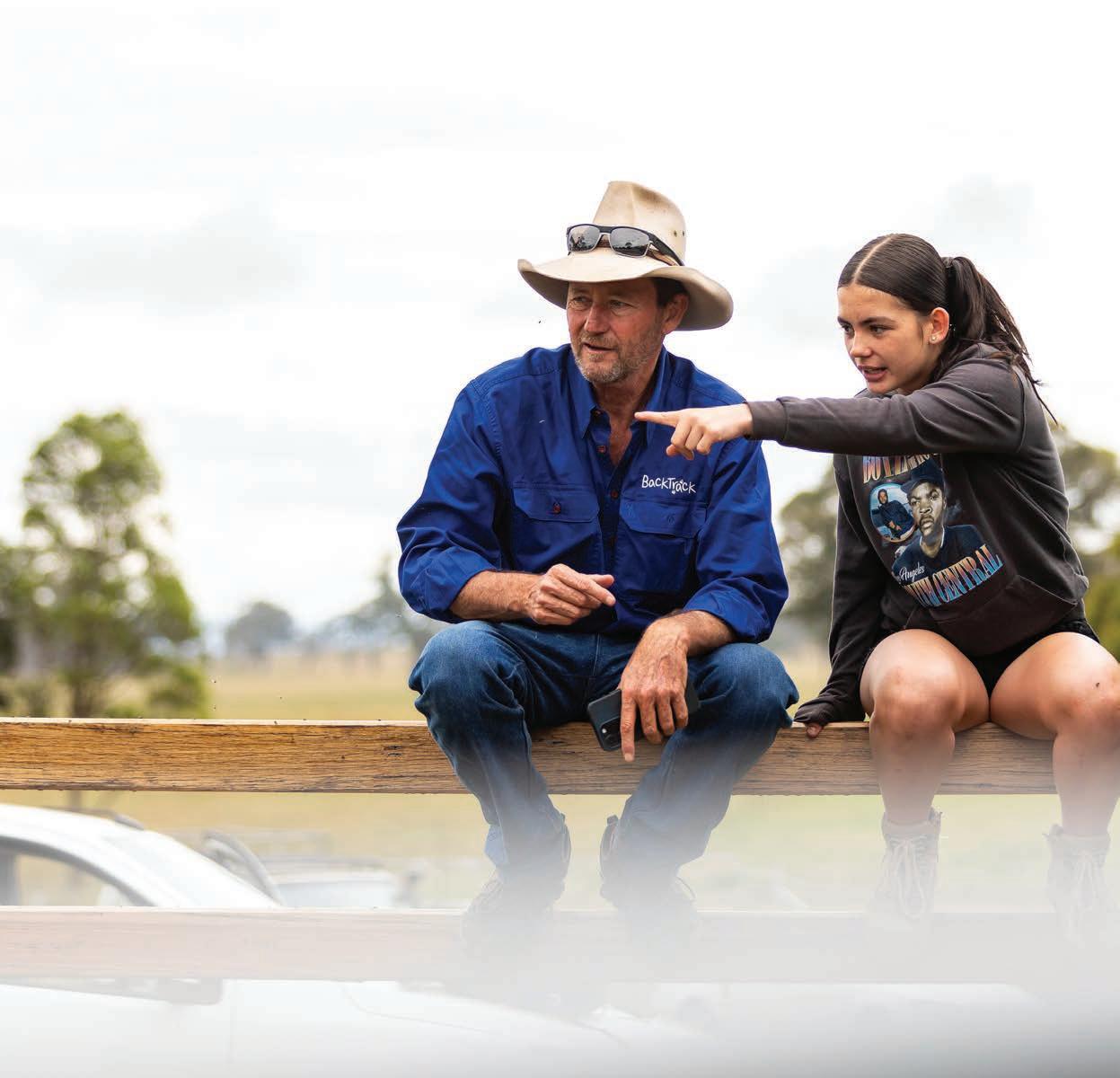

These three Australian charities are all about supporting those in vulnerable positions, from young people to displaced women and hospital patients.
Now more than ever, giving back to your community can make all the difference when it comes to getting someone back on their feet. And as these charities show, Aussies are great at lending a helping hand.
BackTrack provides holistic support for young people going through tough times. The young people the charity works with are facing complex challenges such as housing instability, trauma, unemployment, poverty, and substance abuse.
The BackTrack Core Program is designed to help Aussies aged 11-18 to develop literacy, numeracy and life skills. This takes the form of one-onone teaching sessions, driving lessons, and access to “The Cow“, which is a mobile classroom on wheels enabling the team to reach young people in rural and remote areas. On-the-job and accredited training can also be delivered thanks to partnerships with registered training organisations, allowing young people to enter the workforce with essential tools.

For those needing a safe place to stay, BackTrack offers fully supported and independent living at its main home in Armidale, with regular family dinners, camp outs and excursions to help build connection and resilience for young people. Staying in a tiny home also allows BackTrack to provide rental history, so teens can build towards moving into their own place. Around-the-clock youth workers teach them how to cook, clean, and set themselves up for independent living.
BackTrack Works is another vital program. Launched in 2018, it enables young people to access accredited training, traineeships and employment opportunities. Young people can participate in commercial services and community projects in agriculture, construction and more, while also making use of a targeted transition scaffold designed to help them enter the wider workforce.
This is only the beginning of the services provided by BackTrack. Other efforts include the Paws Up program, enabling young people to engage regularly with dogs for a loving, nonjudgemental presence that can help with trauma recovery, education, and social impact.
The Schools Outreach program takes BackTrack youth and dogs to primary schools in remote areas to read to younger children during the school year. This increases literacy levels and connection with role models.
Launch Housing provides emergency relief for women and children facing family violence and homelessness. The team believe that everyone deserves a safe night’s sleep, and are committed to ending homelessness in Melbourne.
The charity is one of Victoria’s largest community housing and homelessness organisations, providing crisis support, social and affordable

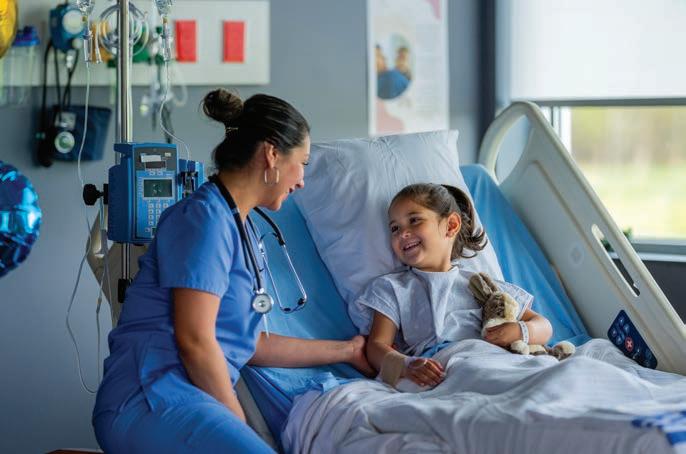
housing. Viv’s Place is Australia’s first permanent supportive housing project for women and children fleeing from family violence. The building offers space for 60 women and 130 children to find a long-term home, connect with other families in communal areas, and access support services such as family counselling. By offering permanent housing, the program allows women and children to find peace and security, eventually re-engaging with schooling and the workforce in a safe and supportive environment.
Elizabeth Street Common Ground is a housing solution for those experiencing long-term homelessness, with 65 studio apartments and 24hour support from professionals to ensure residents can access the care they need.
In 2024 alone, Launch Housing assisted more than 2,500 people with emergency accommodation, offered more than 2,300 people access to nurse and health support, and provided 74 per cent of young people leaving its facilities with study, employment or both.
THIS PAGE: LAUNCH HOUSING VOLUNTEERS OFFER CRISIS SUPPORT FOR HOMELESS AUSSIES; WISHLIST FUNDS VITAL MEDICAL SUPPORT.
Wishlist is a not-for-profit organisation purchasing vital medical equipment, funding support services and accommodation, and raising money for staff education. Since 1998, it has raised more than $15 million towards obtaining essential medical equipment and infrastructure in hospitals.
Wishlist Centres provide affordable accommodation for patients or their families, within walking distance of major hospitals on the Sunshine Coast. These self-contained rooms provide a place to rest between visits, with support services, exercise equipment, outdoor spaces and more.
Wishlist Coffee Houses, located outside Nambour and Gympie Hospitals, are run almost entirely by volunteers. Serving more than 100 coffees each day for health staff, patients and visitors, all proceeds from these cafes are donated directly to Wishlist programs for life-changing medical equipment and upgrades. With just $1,000 a year, Wishlist can fund a therapy dog for physical, mental and emotional support to a patient. Other donation items regularly provided through funding include insulin pumps for paediatric diabetes patients, iPads for addiction recovery support, and enhanced care for women with pregnancy complications.
Other Wishlist services include a patient transport bus for residents travelling to the Gympie hospital, fundraisers to support the health of local patients and families, and Wishlist vending machines that can be installed in Aussie businesses to offer workers food and drinks for productivity while funding essential medical services.


New research maps key orca hotspots across Australia, revealing urgent conservation gaps as human activity threatens these magnificent creatures’ fragile habitats.
Words: Michelle Hespe
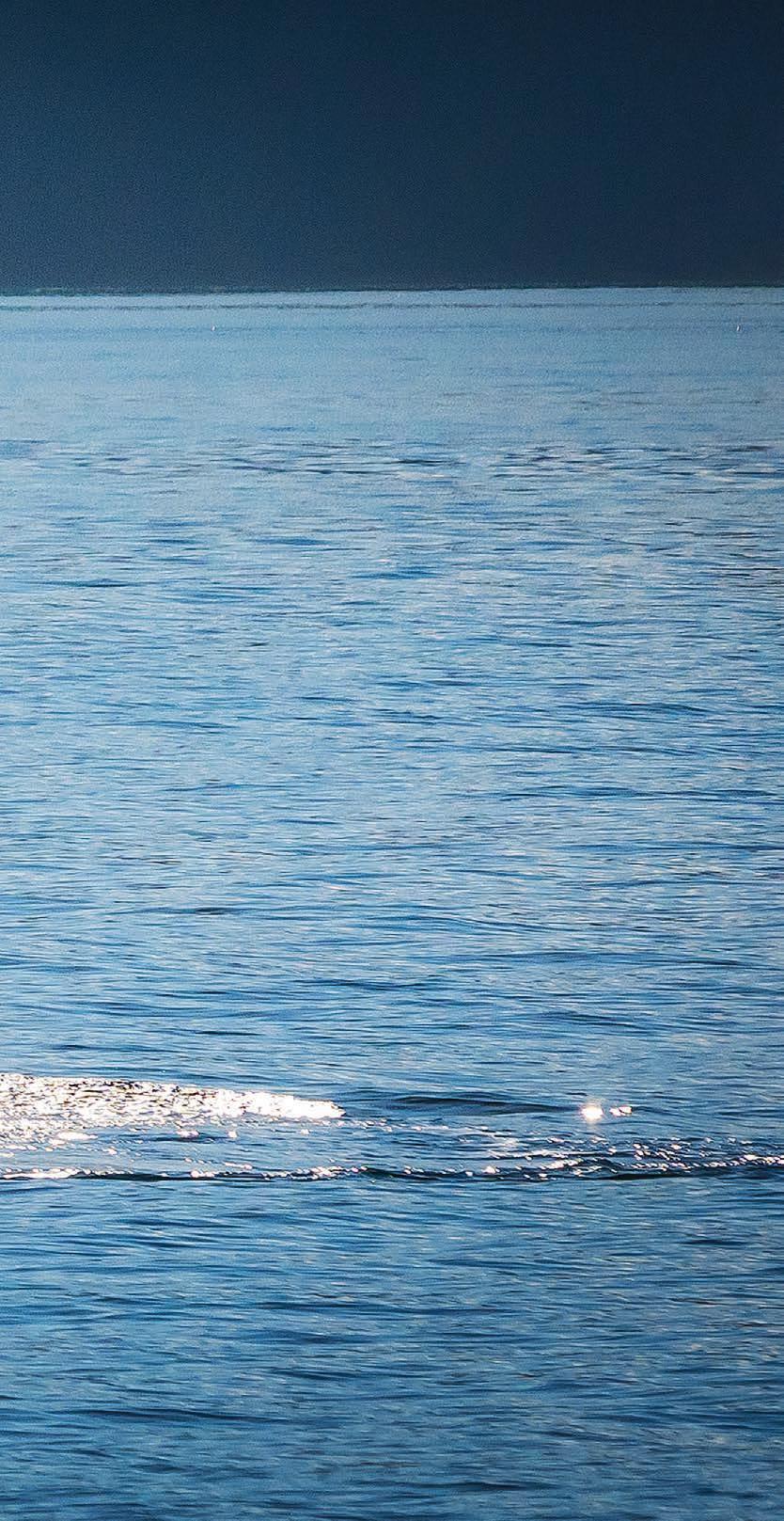
Killer whales (aka orcas) are among the ocean’s most powerful apex predators, yet their presence in Australian waters has long been overlooked when compared to their cousins in the northern hemisphere and Antarctica.
New research from Flinders University is helping to change that narrative, mapping the distribution of orcas across Australia and identifying three ecological hotspots crucial to their survival.
The study, led by Flinders University’s Cetacean Ecology, Behaviour and Evolution Lab (CEBEL), has compiled 40 years of sightings data, confirming orcas are present year-round in every Australian coastal state and territory.
Using species distribution modelling, researchers analysed more than 1,300 verified killer whale sightings.
Their analysis pinpointed three key regions of high habitat suitability:
• The Bonney Upwelling off the coast of South Australia and Victoria;
• The Bremer sub-basin in southwestern Western Australia;
• Ningaloo Reef in north-western Western Australia.
“These zones are ecologically significant, and now we have the data to show just how important they are for killer whale populations,” says lead author and PhD candidate Marissa Hutchings.
“Our findings give us the first nationwide picture of orca distribution in Australian waters – and the first step toward more effective conservation and management strategies.”
The study also supports emerging evidence that at least two ecologically distinct forms of killer whales inhabit Australian waters: one
existing in temperate Australia, and the other in tropical waters. The two types differ in habitat preference, behaviour, and possibly even diet and genetics.
“This is a major step forward,” Hutchings explains. “Australia has extremely unique populations of orcas, and we need to manage them accordingly, especially as their habitats face increasing pressure from human activity.”
Australia’s marine environments are increasingly under strain from human influence – commercial fishing, tourism, shipping, offshore drilling and chemical pollution. Each of these presents risks to large marine species, particularly to top predators such as orcas, which are sensitive to changes in prey availability, noise pollution and habitat disruption.
“Understanding the range and ecological needs of killer whales is critical,” says Associate Professor Guido Parra, a co-author on the paper. “As anthropogenic stressors increase, so does the urgency to implement marine protections that reflect the real-world needs of species.”
Of particular concern is the fact that some of the most significant habitats identified in the study are only partially protected under current legislation. This includes parts of the Bremer Canyon, a tourism hotspot known for its high marine biodiversity, and sections of Ningaloo Reef, a UNESCO World Heritage site that is extremely popular with tourists.
The paper highlights the essential role of citizen science. Sightings and data submitted by whale watchers,

researchers, ecotourism operators, and recreational boaters were instrumental in building the 40-year database used for the modelling.
“Citizen science fills critical gaps in large marine monitoring projects, especially in remote coastal areas,” says senior author Associate Professor Luciana Möller.
“This study shows how collaborative research, involving NGOs and the public, can inform meaningful conservation policy.”
Organisations such as Project ORCA and Killer Whales Australia were instrumental in collecting and verifying sightings, contributing to a robust dataset that helped researchers determine where conservation efforts could be most impactful.
Despite growing knowledge about killer whales in Australia, the species remains data deficient and is not currently listed under Australia’s Environmental Protection and Biodiversity Conservation (EPBC) Act. This leaves them vulnerable to habitat
CLOCKWISE: ORCAS IN MOTION; CITIZEN SCIENCE (ORDINARY PEOPLE RECORDING OBSERVATIONS) HELPS STUDIES EVOLVE; A MAP SHOWING ORCA LOCATIONS & ROUTES.


degradation, particularly in areas not yet designated as marine sanctuaries.
“The findings of this study need to inform real legislative change,” Möller says. “If we want to protect orcas and the marine environments that support them, we must update our policies to reflect current science.”
With climate change, industrial expansion and global shipping activity continuing to alter Australia’s marine ecosystems, the importance
of evidence-based policy has never been greater.
The research team hope their findings will help guide future marine planning, including expansion of marine parks and stricter protection zones for sensitive habitats.
“We need to ensure that conservation measures evolve alongside our scientific understanding,” Hutchings says.
“That means more research, more collaboration, and better protections for the species and ecosystems we all depend on.”

Catherine Manuell Design in collaboration wirth artist Mim Cole – celebrating our Aboriginal Women Artists project. Working with wonderful Aboriginal women artists from creative communities around Australia. A percentage of all sales goes directly to the artists. Colourful designs for our everyday, colourful travels. Showcasing Australian women artists’ paintings, and other vibrant collections!



Catherine Manuell Design is a member of the Indigenous Art Code. info@catherinemanuelldesign.com Mobile: 0492 819 527
Look at our website for more of our artists’ collaborations and designs and to find our colourful stockists. www.catherinemanuelldesign.com








Treat the family to a mini break with a Day Stay Package at Brisbane Airport Hotels Group.
Perfect for a few hours of comfort, rest, or fun during your layover! Rates starting from only $145*.
*Subject to availability. Prices vary at each hotel.

SCAN TO BOOK

